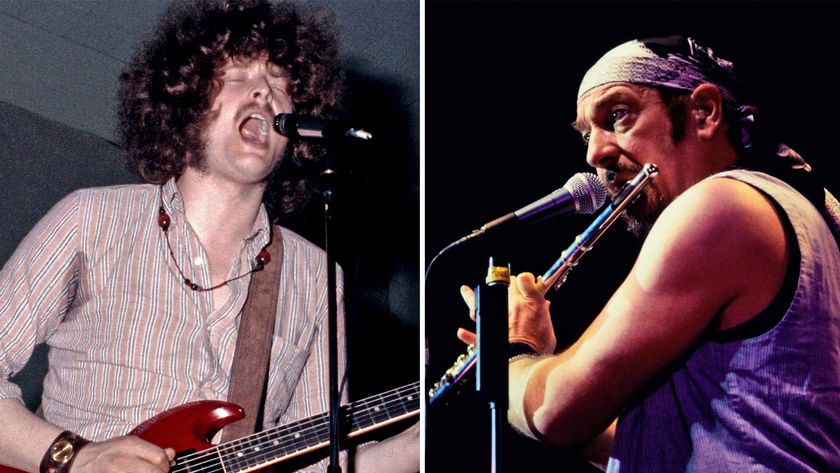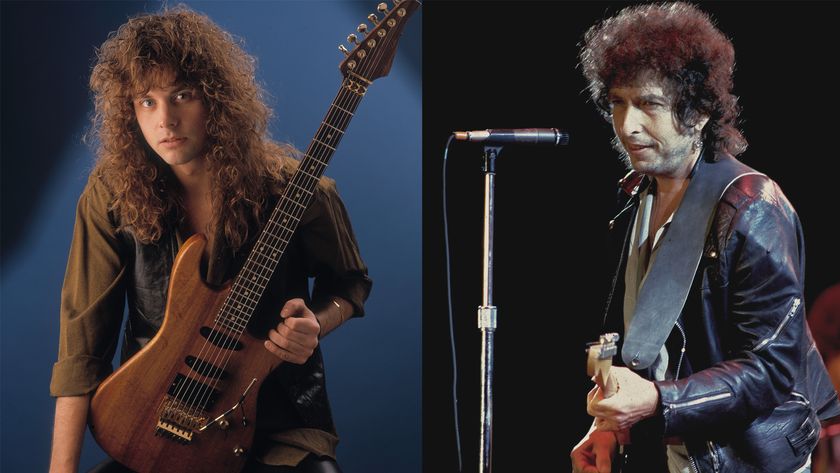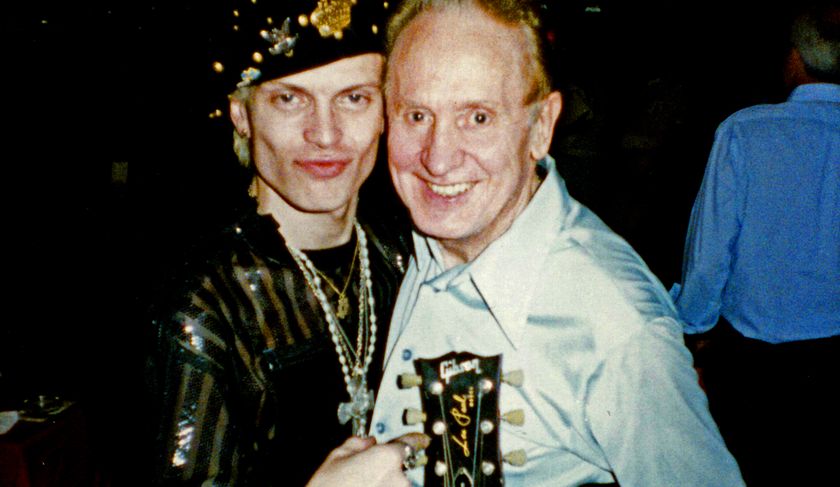"Not only did he play each of them for three or four minutes, he even suggested that some of them be put in alternate tunings." Jimmy Page made sure there's a little bit of himself on every one of his new Gibson signature SJ-200 models
The two limited-edition models are based on the Gibson acoustic he played on classic tunes from 'Led Zeppelin I.'

In late spring of 1970, Jimmy Page did a rare thing. He performed on solo acoustic guitar, without the other members of Led Zeppelin, on the BBC’s Julie Felix Show.
Felix, an American folksinger from California, was nevertheless so popular in Britain at the time that she was dubbed “Britain’s First Lady of Folk.” Page, whose affection for folk music ran deep — in particular for fingerstyle guitar greats like Davey Graham, Bert Jansch, and Doc Watson — performed a semi-improvisational medley combining his “White Summer” and “Black Mountain Side.” Both tunes, like the later Zeppelin epic "Kashmir," are played in the evocative DADGAD modal tuning, popularized by Graham.
Page’s guitar of choice for the Felix performance was a 1964 Gibson J-200, with the classic “Flowers & Vines” splayed pickguard, a Sitka Spruce top, and flamed maple back and sides, belonging to noted British pop producer Mickie Most. Page had first borrowed the guitar from Most in September 1968 for the Olympic Studios recordings of “Babe, I’m Gonna Leave You,” “Your Time Is Gonna Come,” and “Black Mountain Side.”
Now that guitar has provided the inspiration for two new models created by Gibson in partnership with Page: the Jimmy Page 1964 SJ-200 and 1964 SJ-200 Collector’s Edition from Gibson Custom. Only 50 of the 1964 SJ-200 Collector’s Edition and 100 of the Jimmy Page 1964 SJ-200 will be available worldwide in this extraordinary limited run via authorized Gibson dealers and online at Gibson.com.
“Mickie’s J-200 was a dream to play,” Page recalls fondly in Jimmy Page: The Anthology, “and it was a beautiful guitar. I remembered it had such a wonderful recording sound.” Put on Zep I’s “Babe, I’m Gonna Leave You,” and listen carefully to Jimmy’s subtle dynamic shifts within that descending A minor–based rhythm pattern, and the gorgeous flamenco-inspired lead figures from 4:52–5:25, and you’ll hear it: a sound that is at once feathery and bold, jangly and structured, resonant and chimey.
Unfortunately, the guitar was stolen and its whereabouts remain a mystery, according to Led Zeppelin News. As a result, Gibson says it developed the Jimmy Page 1964 SJ-200 models in close collaboration with, and with significant input from, Page to ensure it met "his exacting standards and recollection."
Robi Johns, the Gibson Senior Product Development Manager in Bozeman, Montana heading the team behind the new models, provided Guitar Player with details on the Page signature models. Johns explains that while all J-200s feature a distinctive “Moustache-style” bridge plate, the Page/Most J-200 boasted a Les Paul-style Tune-o-matic bridge with nylon bridge saddles — not atypical for a 1960s ABR — which add a pleasing, almost papery, sitar-like timbre to the notes.
Get The Pick Newsletter
All the latest guitar news, interviews, lessons, reviews, deals and more, direct to your inbox!
“Those nylon saddles give the guitar a very balanced sound, but it’s also jangly in a nice musical way.” (Gibson also includes an additional brass Tune-o-matic bridge with every Page SJ-200, as Page evidently enjoyed experimenting with those during the development process.)
The new models feature a subtly curved or “domed” top, a Cherry Tea nitrocellulose lacquer finish, highly flamed AAA maple back and sides and an AAA Sitka spruce top, as well as a highly-flamed three-piece maple neck with a rosewood fretboard. Gibson describes the neck shape as "round profile" and has sculpted it based on Page's memory of the original and a similar model from 1965 that resides in the guitarist's collection.
In addition, the models feature increased depth around the neck joint and mother-of-pearl graduated crown fretboard inlays. Appointments include TUSQ bridge pins, gold hardware finish, Kluson Waffleback with Keystone button tuners, the Murphy Lab’s Custom Light Aged treatment and mother-of-pearl Graduated Crown inlays.
Each Collector’s Edition guitar is signed by Page on the back of the headstock, and was personally played by Page himself in early September at Nashville’s storied RCA Studio B, the legendary recording home of the great Chet Atkins — one of Page’s formative influences — currently under the able helm of producer Dave Cobb (Brandi Carlile and Rival Sons). (Other than the signed headstock and being Page-played, the non-“Collectors” models are identical instruments, and each features an individually signed sound-hole label.)
Page was clearly pleased with the results, starting with the prototype he received. “When I took it out, I thought, ‘Wow, they've got it straightaway,'" he says. "I could see all the flame coming out on the side of it, I went, 'Oh my goodness gracious, it’s just so beautiful.' It was so authentic, and yet it was so new at the same time.”
When it came time to view the finished models, Page had to play every one.
“We weren’t quite sure if maybe he’d just a play a few chords on each one,” Johns says, “but not only did he play each of them for three or four minutes, he even suggested that some of them be put in alternate tunings, so he’d be surprised with each SJ-200 that he played. That’s pretty cool.”
The two models are priced at $12,999 for the 1964 SJ-200 and $19,999 for the 1964 SJ-200 Collector’s Edition. For more information, visit Gibson.







A former editor at Guitar Player and Guitar World, and an ex-member of Humble Pie, Mr. Bungle and French band AIR, author James Volpe Rotondi plays guitar for the acclaimed Led Zeppelin tribute, ZOSO, which The L.A. Times has called “head and shoulders above all other Led Zeppelin tribute bands.” Find JVR on Instagram at @james.volpe.rotondi, on the web at JVRonGTR.com, and look for upcoming tour dates at zosoontour.com

"I have a Mercury on the guitar now, which makes me very happy.” Brian May’s new signature Gibson SJ-200 features a subtle tribute to the late Queen singer Freddie Mercury

“The most remarkable Taylor I’ve reviewed in nearly a decade.” Taylor’s Gold Label 814e SB Super Auditorium delivers classic pre-War era sound and style in a modern Taylor guitar












